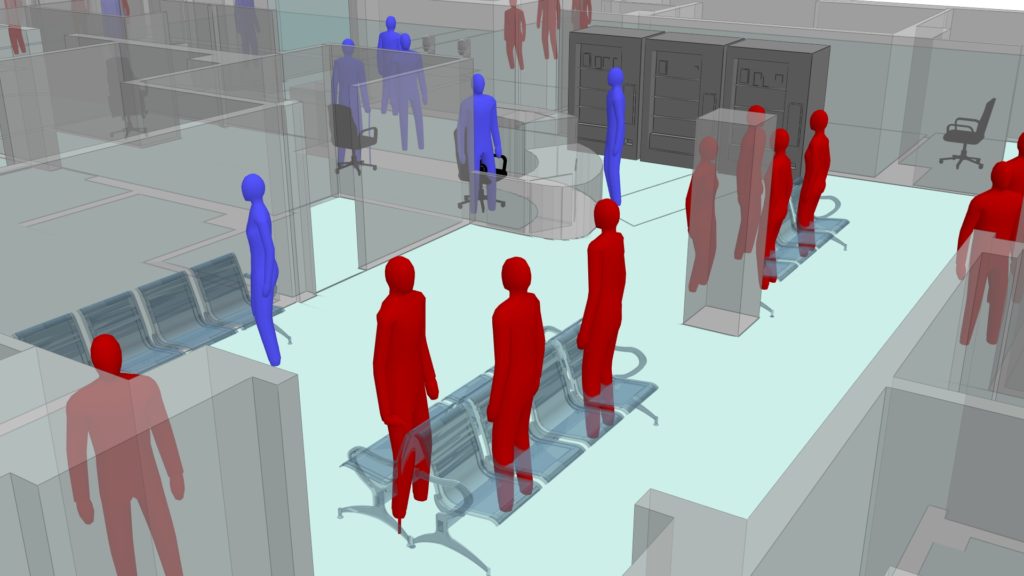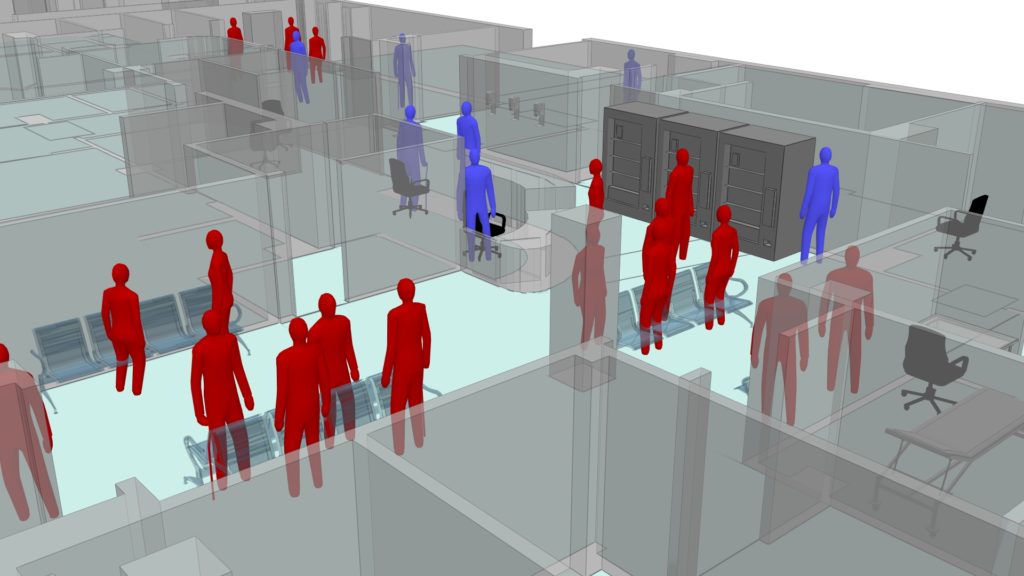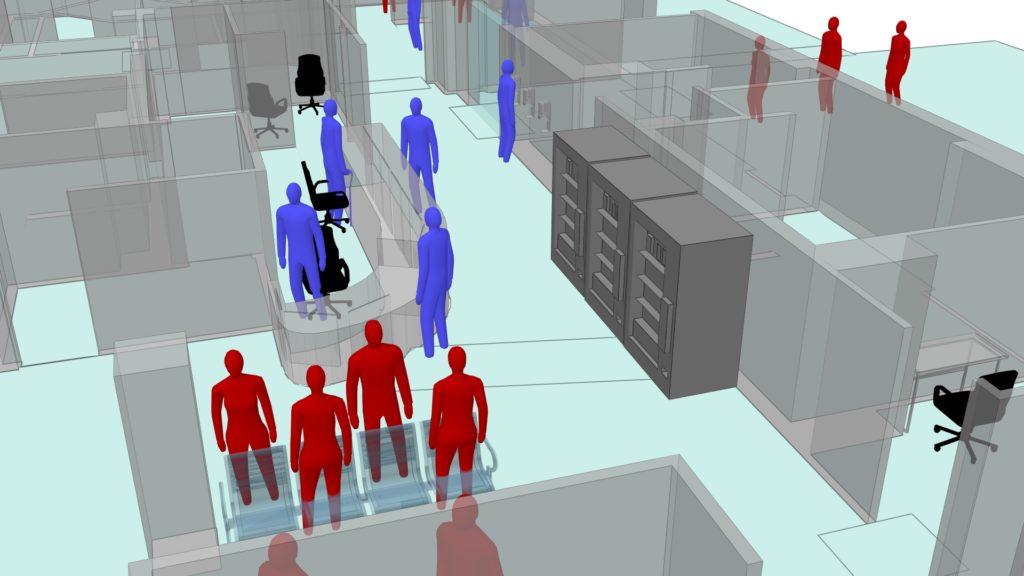Software Used on this Project
Project Overview
During the COVID-19 pandemic, the NHS came under major strains in more ways than one. With winter 2020 fast approaching as a crucially busy time of year for hospital admissions, Oasys MassMotion was used to help Whittington Emergency Department discover if they had the capacity to safely manage the seasonal increase in patients whilst maintaining social distancing.
Advanced pedestrian simulation software, Oasys MassMotion, is a comprehensive tool that was customised to model different capacity scenarios and as Whittington Health NHS Trust planned for their busiest period, it helped to build a stronger understanding of avoiding overcrowding and the capacity of their waiting rooms. A people-modelling study simulated patient attendees to identify opportunities that would reduce any risks and improve the hospitals resilience in managing an increase in patient numbers. When the simulation data was analysed, the aim was to review potential interventions for the hospital to consider and to advise on various options to create additional waiting space. Our software provided insights that traditional data analysis cannot achieve.

How Oasys proved invaluable
In 2019, 89,000 unique patient data entries were analysed which was used to create individual patient itineraries. This was combined with a 2D AutoCAD plan to produce an accurate 3D simulation. The simulation enabled the prediction and analysis of the movements of patients throughout the emergency department. There was the incorporation of triage categories for example which is the distinction between individual adult and paediatric patients and those who arrived with accompanying bodies. This allowed the hospital to be able to recognise where they could improve their resilience in their clinical environment. The MassMotion Software Development Kit (SDK) was also used to model close accompanying behaviour critical to the understanding of the waiting room. The main result found was that capacity would exceed 250% and more than twice of the current amount of waiting space would be needed for the adult waiting area.

MassMotion software allowed the hospital to assess how the universal experience for staff and patients could be improved throughout the year whilst safely managing the increasing demand under social distancing conditions. Regarding improving patient experience, the options that the data outlined included operational changes such as adding additional reception desks to minimise queuing and limiting the ability to have someone accompany a patient to the hospital. Spatial interventions were highlighted as a potential option, showing that an overflow queuing space would improve the management of social distancing at peak times.

“Arup’s approach could be beneficially applied to other hospital departments and patient journeys when reviewing and managing healthcare capacity-related challenges during the COVID pandemic and beyond.” – Jonathan Gardner: Director of Strategy and Corporate Affairs, at Whittington Health NHS Trust.
MassMotion made it possible to create a detailed simulation using historical research to simulate a variety of scenarios based on what the project requirements for this client were. An extensive analysis was then carried out which identified potential capacity, flow, and congestion problems. The situation could then be accurately revised, and we were then able to advise on fixing any issues early, saving time for the hospital before winter 2020 hit. The outcome of this study built strong evidence that the hospital’s concerns were valid and supported informed decision making. In turn, the hospital requested funding to expand and redesign their waiting space for attendees which was successful.
Head to the Arup article to find out more about this study.
Find out more about Oasys MassMotion by watching this webinar recording here, which showcases our new and improved version of MassMotion 11.
